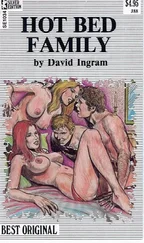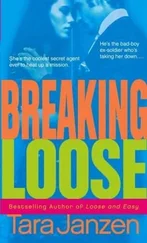The second sequence in the final episode we would like to discuss here is not, strictly speaking, a sequence, but rather a series of images sandwiched between two sequences. These images are connected in such a way that the work of enunciation becomes perfectly legible and clearly inscribed in the editing joining two scenes constructed to be isomorphic. The sequence begins in Jane’s apartment (she is shown to have died of an overdose at the beginning of the episode), where her father is trying to find a dress to put on her for the funeral. Through a series of shot-reverse shots, we follow the gaze of the crushed man as he discovers his daughter’s drawings and then a mural she painted herself, showing a young woman caught in a network of colorful arms high in the sky, a teddy bear floating by her side. Then, an apparently subjective point of view—the camera is at the back of the closet—shows him on the telephone, facing his daughter’s clothes hanging in the closet, looking for the right kind of dress. The man is complaining to his interlocutor that there are only black dresses, nothing colorful or gay. When he finds what he is looking for, the camera changes angle and we see the man place the dress on the bed and smooth the sleeves with his fingers to get out the wrinkles. In the final shot of the sequence we see the man in a low-angle shot leaning over the dress, its arms crossed, overcome with emotion, but the “reverse shot” takes us to a completely different location to the White residence and the matching shot is Walter’s baby, her father leaning over her preparing to change her diaper. The rest of the sequence shows us Walter interacting with Walter Jr., his adolescent son, who he reproaches for making too much noise. Although all Walter Jr. has done was to express his joy when he learned that his website to raise money for his father had met with great success. Here the work of enunciation is revealed through the promiscuity between two places, two characters and two attitudes made possible by the editing, confronting viewers with the highly constructed nature of a syntagm which, surprised or amused, they discover to be less subject to the rules around the transparency of reality than to the rules of a particularly eloquent discourse. Many factors contribute to this effect and are not limited to the matched cut mentioned above. In fact a comparison of the two scenes reveals a number of similarities. In each case, the world of childhood is evoked, in one scene through the presence of a teddy bear in Jane’s painting and in the other by the little polka-dot pajamas worn by Walt’s daughter; both men reproach their offspring for things which in fact are the symptoms of their own guilt; the two articles of clothing appear empty, one because it is and the other because it is too large for the baby wrapped up in it. Of course, there is a radical difference between the two scenes in the sense that Walt’s actions are motivated by this wriggling new creature which depends on him, while Jane’s father’s actions are motivated, on the contrary, by the attentions required by his daughter’s cruel death. When joined in this way, the two scenes shine light on each other: although the two men are carrying out the tasks required of an affectionate and attentive father, their respective positions are completely antagonistic. In addition, it is even possible to imagine that the drugs produced by Walt were in part, or indirectly, responsible for Jane’s death, rendering the intrication of the enunciation in the énoncé even more apparent.
In the episode’s final sequence we will discuss here renders the enunciative work visible in two ways: one obvious and the other much more subtle. The sequence begins when Walt comes home to find a television crew there, waiting for him to begin shooting a news story on the money his son has raised through his website. Walt is not at all pleased about being in the spotlight, given the extent of his criminal activities. His sister-in-law planned the interview and she is brimming with self-satisfaction. The journalist invites Walt to sit on the living room couch with the son in the center and the parents on each side. A series of shot-reverse shots taken from the TV camera’s perspective alternates with shots of the journalist asking Walter Jr. questions, along with Walt’s family composed together in a traditional family portrait pose, a falsely idyllic image of a unified and supportive home. Then, without any real justification, the camera suddenly focuses exclusively on Walt and begins an insistent zoom in while we listen to his son’s off-screen voice discussing how much he respects his dad as a father, a teacher, and a hero. With each word spoken by the young man, the camera frames Walt’s face tighter and tighter, revealing his palpable discomfort. When the zoom is complete, the camera lingers for a few long seconds on his face while we can almost hear the veins in his forehead throb and sense the growing redness in his face. Far from showing the dialogue (in this case an interview) in a transparent and classical manner, the scene works openly to isolate each person producing a powerful counterpoint effect. Here it is mostly the mise en scène that contributes to creating a reflexive tone by bringing out the medium’s strategy. The living room of the White family is literally overrun with television equipment for at most a few minutes of filming illustrating the boorish and disagreeable manners of TV crews. This reality is in addition overdone, deliberately hackneyed, like an overly flattering portrait of a family which in fact is in the process of falling apart. The contrast between the “TV image” (glimpsed through the video monitor) and the “cinema” image is thus a clear indication of the gap between these two kinds of filming opening up a reflexive reading of the scene: the truth of the latter is even better revealed through the way in which everything tallies to show the falsity of the former. On a more properly discursive level, it is interesting to note how each word spoken by Walter Jr. is carefully chosen to refer to precise elements of the script which, the viewer knows, contradict these remarks or can be understood in a quite different sense. Thus, when he says that Walt is a good father and a good teacher that he’s “patient and always there for you,” it is hard not to think how he has been quite absent from his son’s life for past few months, and to remember a quite recent sequence in which he illustrates these qualities with Jesse, but not with his own son. The last few seconds of this sequence showing us Walt completely paralyzed, frozen with discomfort and remorse, thus helps show the other side of a completely televisual mise en scène, which is seen as untruthful. The last few words spoken by Walter Jr. are about is father being his personal hero also serve as a direct reference to the empathy some audience members may feel for Walt as the series’ protagonist.
It would appear necessary at this point in our discussion of these two episodes of Breaking Bad to demonstrate the implications of our analysis for an understanding of contemporary American television series and the role they play in the contemporary media landscape. For if it is possible to speak of a revolution in quality (Feuer 2007) in an initial 1950s and later 1990s period of television, the transformation of the drama series illustrated by programs such as Breaking Bad and a few others—for the most part associated with the HBO phenomenon—may be the sign of a kind of “permanent revolution,” a state of affairs that is becoming stabilized and through which commercial TV programming is not only improving in quality but is now assuming an aesthetic role generally associated with the cinema. Institutionally and economically, it is apparent that the efforts of cable television networks to position themselves in the market, as they have gradually abandoned programming centered on off-network series and second-run theatrical releases to produce original TV series, have contributed to the establishment of a new paradigm. Nevertheless, these new television programs available on new platforms will fulfill this role only very marginally if they do not succeed in meeting public demand in terms of quality and, by extension, of aesthetics. It is precisely this demand, we believe, that the openly meta-discursive function of the case studies we have analyzed here highlights and deserves the critical and audience reaction to the series, which has been both enthusiastic and unanimous. For what exactly is this device, the “enunciation that enunciates itself,” which we have seen pretty much everywhere in the visual narrative of Breaking Bad ? Metz (1991) is quite eloquent on this point:
Читать дальше












